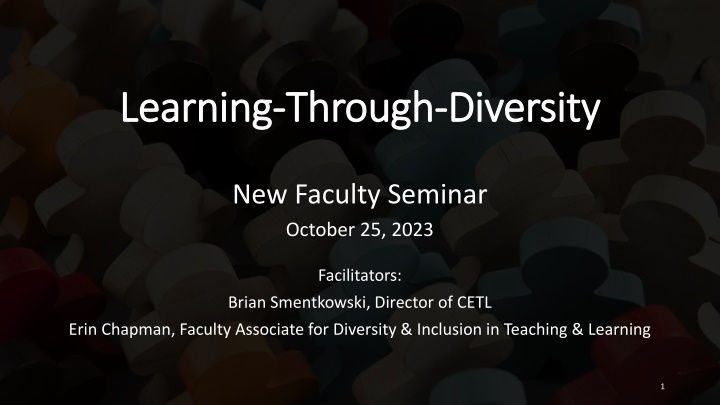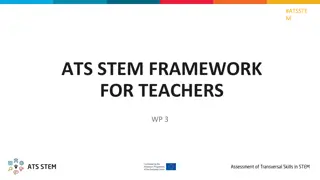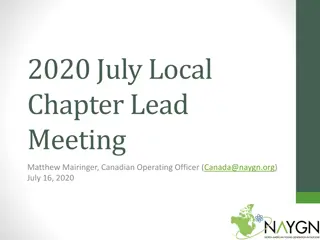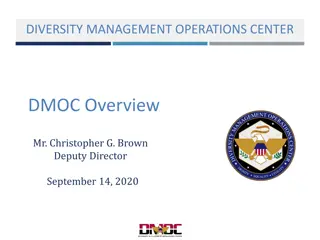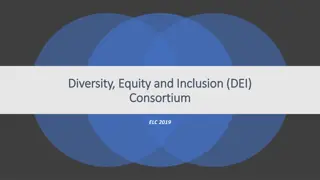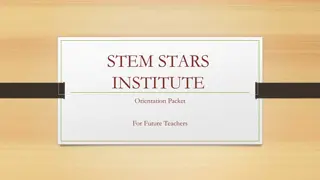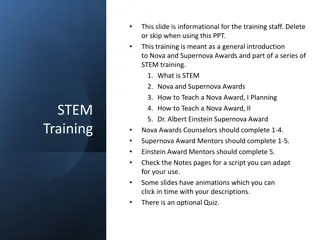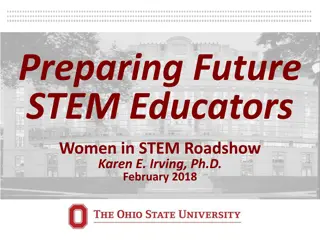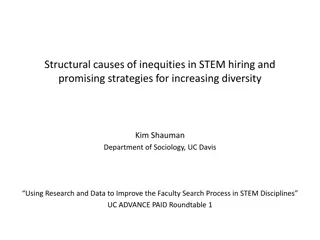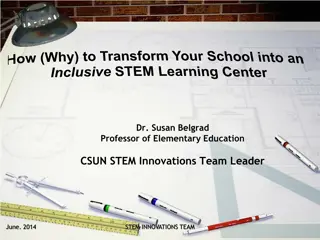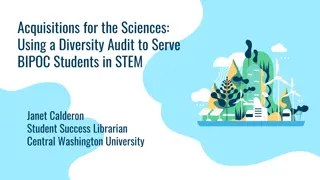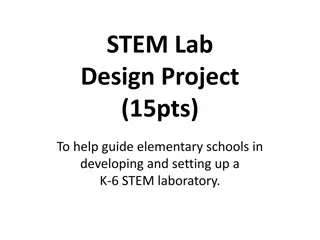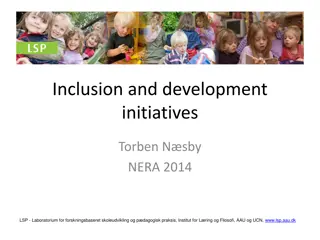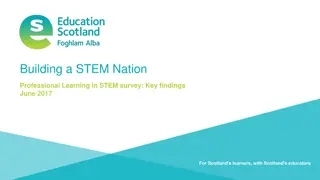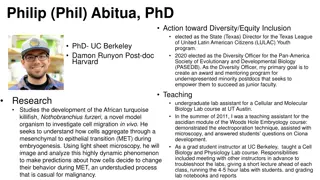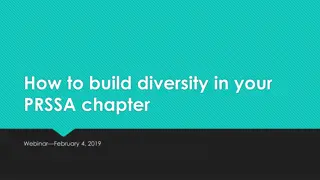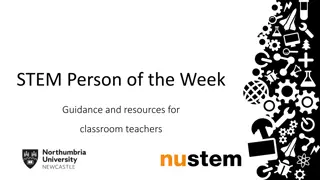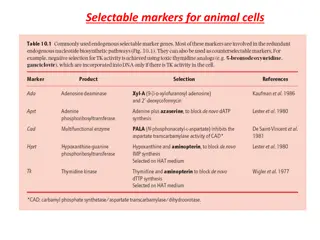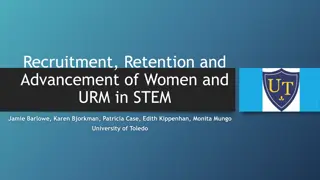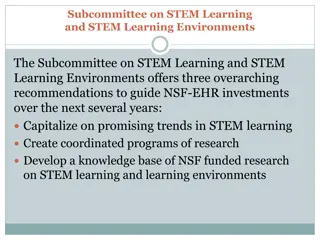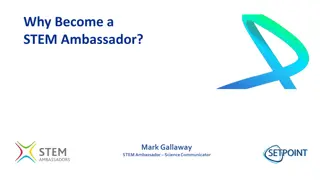Enhancing STEM Education Through Diversity and Inclusion
Discover how the Center for the Integration of Research, Teaching, and Learning (CIRTL) aims to enhance excellence in STEM undergraduate education by developing a national faculty committed to implementing evidence-based teaching practices for diverse learners. Explore the concept of learning through diversity and teaching as research, emphasizing the importance of inclusive learning communities. The ultimate goal is to improve STEM learning for all students, increase diversity in STEM fields, and enhance STEM literacy nationally.
Download Presentation

Please find below an Image/Link to download the presentation.
The content on the website is provided AS IS for your information and personal use only. It may not be sold, licensed, or shared on other websites without obtaining consent from the author.If you encounter any issues during the download, it is possible that the publisher has removed the file from their server.
You are allowed to download the files provided on this website for personal or commercial use, subject to the condition that they are used lawfully. All files are the property of their respective owners.
The content on the website is provided AS IS for your information and personal use only. It may not be sold, licensed, or shared on other websites without obtaining consent from the author.
E N D
Presentation Transcript
Learning Learning- -Through Through- -Diversity Diversity New Faculty Seminar October 25, 2023 Facilitators: Brian Smentkowski, Director of CETL Erin Chapman, Faculty Associate for Diversity & Inclusion in Teaching & Learning 1
A Framework & Practices Mindset, Methods, and Relevance to CIRTL Foundations 2
The Center for the Integration of Research, Teaching, and Learning. The Center for the Integration of Research, Teaching, and Learning. CIRTL seeks to enhance excellence in STEM undergraduate education through development of a a national faculty committed to implementing and advancing evidence national faculty committed to implementing and advancing evidence- -based teaching practices for diverse learners diverse learners. based teaching practices for CIRTL was founded in 2003 as a National Science Foundation Center for Learning and Teaching in higher education. CIRTL is CIRTL uses graduate education as the leverage point to develop a national STEM faculty committed to implementing and advancing effective teaching practices for diverse student audiences as part of successful professional careers. The goal of CIRTL is to improve the STEM learning of all students at every college and university, and thereby to increase the diversity in STEM fields and the STEM literacy of the nation. 3
*Learning *Learning- -through through- -Diversity* Diversity* Learning-through-diversity capitalizes on the rich array of experiences, backgrounds, and skills among STEM undergraduates and graduates-through-faculty to enhance the learning of all. It recognizes that excellence and diversity are necessarily intertwined *Teaching *Teaching- -as as- -Research* Research* Core Ideas Teaching-as-research is the deliberate, systematic, and reflective use of research methods by science, technology, engineering, and mathematics (STEM) instructors to develop and implement teaching practices that advance the learning experiences and outcomes of both students and teachers Learning Communities Learning Communities Learning communities bring together groups of people for shared learning, discovery, and generation of knowledge. To achieve common learning goals, a learning community nurtures functional relationship among its members. 4
Our Broad Broad Goal To become mindful and inclusive faculty who improve learning through teaching. {Note the causality, here} This requires us to: Appreciate the diverse backgrounds of students and their implications for learning. Identify curricular, teaching, and assessment practices that promote inclusive learning. Draw upon the diversity of students to enhance and enrich engaged and inclusive learning. Recognize existing inequities, and promote an equitable, inclusive and respectful climate for learning. 5
Our Targeted Targeted Goal 1. To adopt Learning-through-Diversity as a pedagogical prism for designing, developing, and delivering inclusive, equitable, and accessible learning experiences; To apply strategies to develop, integrate, and assess inclusive, equitable, and accessible teaching practices; To develop a solid foundation for engaging in meaningful DEIA-informed teaching. 2. 3. 6
Making the Connection When we say that Learning-through-Diversity capitalizes on the experiences, backgrounds, identities, and skills of students to enhance learning for all, we are engaging in a representational form of scholarly teaching bringing who we are and who our students are into the equation. It is more than that, though: through a TAR prism, we can hypothesize and predict the impact of equitable, inclusive, and accessible teaching practices on learning. 7
Premise: Inclusive Teaching Practices Inclusive Learning Experiences Faculty and students bring an array of experiences, backgrounds, and skills to the teaching and learning process. Effective teaching capitalizes on these rich resources to the benefit of all. This is "Learning-through-Diversity". At the same time, existing social and educational practices do not always promote equal success for all learners. Creating equitable learning experiences and environments requires intentional and deliberate efforts on the part of present and future faculty alike. This series is designed to stimulate, frame, and support these efforts. https://www.cirtl.net/about/core_ideas/learning_through_diversity. 8
Lets consider some key concepts and think about a mindset What do these words mean to you, and how do they apply to your teaching? 10
A Slightly Deeper Dive: Visible and Invisible Barriers 11
Inclusive Practices and Pedagogies: A Primer Inclusive teaching strategies can be separated into three categories: 1. Incorporating diverse perspectives into course content by expanding reading lists beyond dominant/narrow narratives and their sources; offering various ethnic, racial, and other perspectives in case studies; ensuring PowerPoints and lecture examples offer a variety of human examples; and avoiding tokenizing particular individuals, students, or representations. 2. Creating an inclusive classroom climate where all students are encouraged to participate, by learning about students backgrounds and tailoring approaches accordingly, establishing ground rules for discussing controversial issues, and developing (and helping students develop) deeper awareness of difference. 3. Incorporating Universal Design for Learning principles in class, by providing/facilitating multiple means of engagement, representation, and expression. --Yale Poorvu Center for Teaching and Learning Implicit Bias and critical self-reflection tools: https://poorvucenter.yale.edu/ImplicitBiasAwareness and https://implicit.harvard.edu/implicit/selectatest.html https://projects.iq.harvard.edu/files/eijc/files/inclusive_teaching_strategies_reflecting_on_your_practic e.pdf?m=1525282190 See pp. 24-26, below, to learn more about course, curriculum, instructional, and faculty development in DEIA and LTD. 12
Guides and Resources for Inclusive Teaching 17
Select CETL Inclusive Select CETL Inclusive Teaching and Learning Teaching and Learning Resources Resources The Value of Diversity (pdf) Inclusive Pedagogy Slides (pdf) Keeping My Class Inclusive: Diversity, Inclusion, and Universal Design Online (pdf) Universal Inclusive Design Checklist (pdf) A Quick Guide to Using Inclusive Language (pdf) Microaggressions in the Classroom (pdf) Inclusion By Design Syllabus Survey CETL Repository for DEIA's Inclusion by Design POD Network s Key Resources Tips on Designing Inclusive Learning Experiences Universal Design for Learning (UDL) Resources Inclusive Learning Experiences don t just happen; they are made carefully and with intentionality 18
Guides for Growth and Guides for Growth and Development Development Becoming an anti-racist educator, Wheaton College Center for Urban Education (CUE) Racial Equity Tools, University of Southern California Diversity Toolkit: A Guide to Discussing Identity, Power and Privilege, Master of Social Work Program, University of Southern California Faculty Toolkit on Digital Inclusion, Office of Global Inclusion, New York University Inclusive Pedagogy, University of Chicago Inclusive Teaching Practices, Office of Teaching & Learning, University of Denver Inclusive Teaching Resources and Strategies, CRLT, University of Michigan Teaching Race: Pedagogy and Practice, Center for Teaching, Vanderbilt University Incorporating Diversity, Center for Teaching Innovation, Cornell University 19
